Quick Reference
1924- '26
"Ireland Street" in Worthington
Oil on Canvas
Landscape
Barns
25" x 30"
Home of Ronald T. Lyman, 1926
Littlecote Gallery, Utica, NY, 1929
Myles Standish Gallery, 1931
Williston Academy, 1941
Northfield Seminary, 1941
Thieme Art Gall., Rockport, MA, '41
Westfield Athenaeum, 1941
Grand Central Galleries,1942, '45
Vose Galleries (Boston), 1942
Salmagundi Club (NYC), 1943
Unknown
NA
Related Links
- See also the...
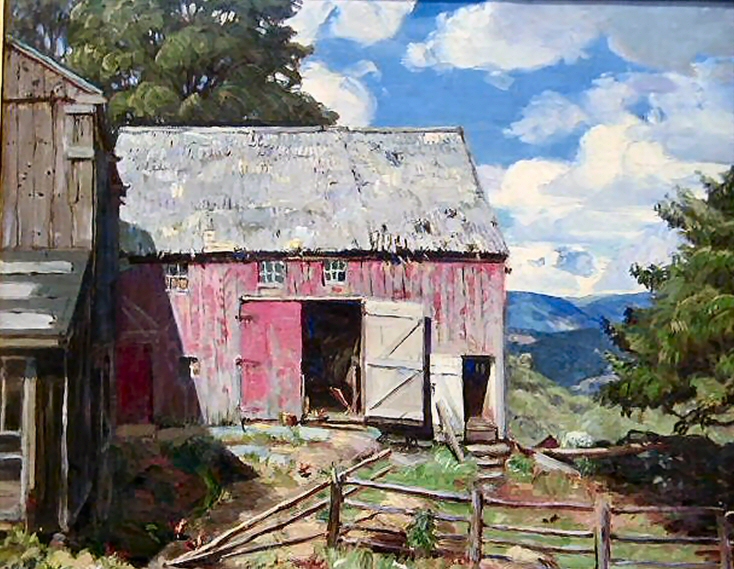 Barns Gallery to view related pieces.
Barns Gallery to view related pieces.
- See also the...
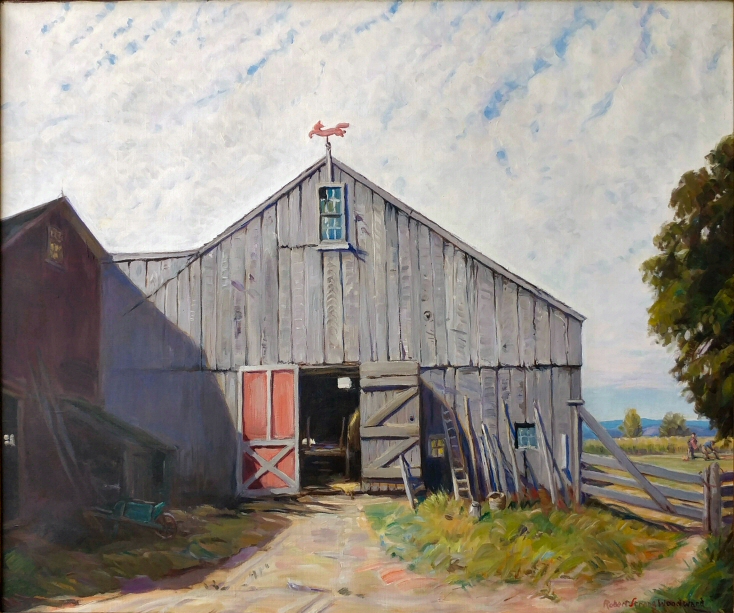 Fences, Gates & Doors Gallery to view related pieces.
Fences, Gates & Doors Gallery to view related pieces.
- See also the...
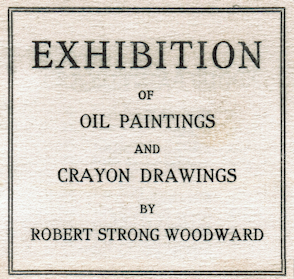 Exhibition List for a complete list of events
Exhibition List for a complete list of events
- See also the...
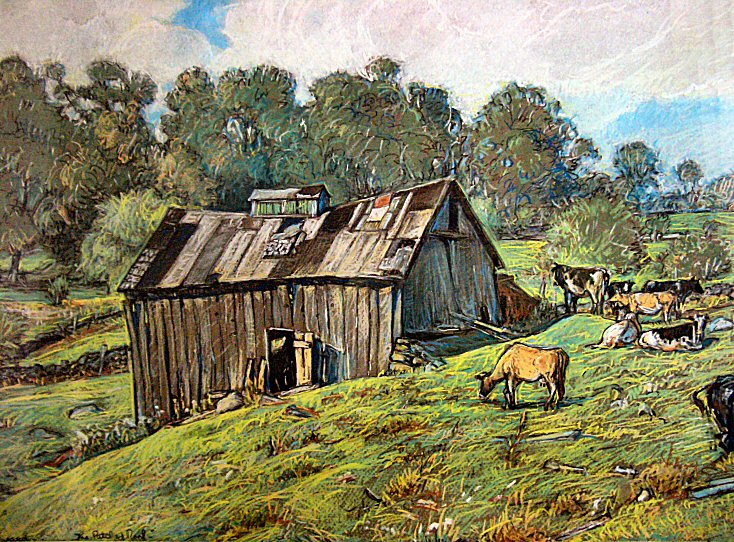 People & Livestock Gallery for related pieces.
People & Livestock Gallery for related pieces.
- Read the Scrapbook story about the Lyman Exhibition, 1926 for more.
Featured Artwork: The Flying Fox ★
RSW's Diary Comments
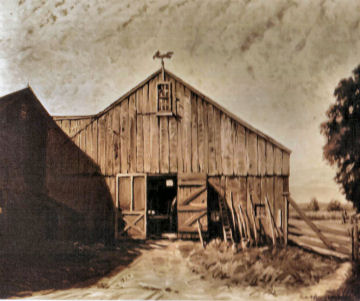
 The Flying Fox Sepia
The Flying Fox Sepia
"Painted prior to 1930. One of my favorite barn canvases, but strangely one never sold up through 1947. Exhibited largely about the country, painted on 'Ireland Street' in Worthington---one of the summers when I used to go over to visit for a week or so, my former hired man, Connie Jarvis, at his farm between Worthington and West Chesterfield---into which 'Ireland Street' feeds just above the 'Chesterfield Gorge'".
Comments on the back of a sepia print:
"Barn is cool sunlit gray, with faded red in paneled door. Dominant shadow is transparent gray violet. Foreground pale flesh color and green. Pearly "mackerel" sky with slits of blue. A lovely "neutral" canvas."

RSW's signature from lower right of painting
★ Editor's Note:
This painting appears to be the "Genus" of Woodward's new painting style following his reemergence from the ashes of the Redgate fire in 1922. Genus, meaning the first of its kind, this painting can be held side by side to any painted after 1933. For more on this, scroll down to read the additional notes section below.
Additional Notes

 Clipping for the Littlecote Exhibit, Mar. 14, 1929
Clipping for the Littlecote Exhibit, Mar. 14, 1929
To see the full article, click on the image
There is something very curious about this painting Woodward is not being honest about in his painting diary: "One of my favorite barn canvases,
but strangely one never sold up through 1947. Exhibited largely about the country..." We believe it WAS one of his favorites. It did exhibit widely but
notice the pattern. There are a lot of exhibits from 1926 to 1931 that this piece could have hung besides Littlecote in 1929. Then it literally disappears
for a decade before appearing at the Williston Academy in 1941 and then is exhbited prominently at several of Woodward's favorite places to exhibit,
particularly, Grand Central Galleries, Vose, and the Salmagundi Club.
This is a very common pattern with Wooodward's "favorites." He uses
the term 11 times in his painting diary, and 8 of those favorites still remain in his estate despite exhibiting quite frequently. One of the 10 went to a close
friend, another was sold to Woodward's best customer, Adaline Frelinghuysen, to whom he couldn't say no to, and this painting for whatever reason, RSW
makes no reference to its buyer but we suspect also went to someone special to Woodward. There is just a sliver of doubt for us that the painting "never
sold" until 1947 because there was no interest. We imagine that the right buyer, a prominant collector or museum, could have had this painting for
whatever price but for all others - he appeared to be quite selective. This pattern shows itself with such prevelance in how he handled his Still Life paintings,
and Interiors, none of which were sold to the public but given as gifts to his family members, because he did not want either identified with his brand.
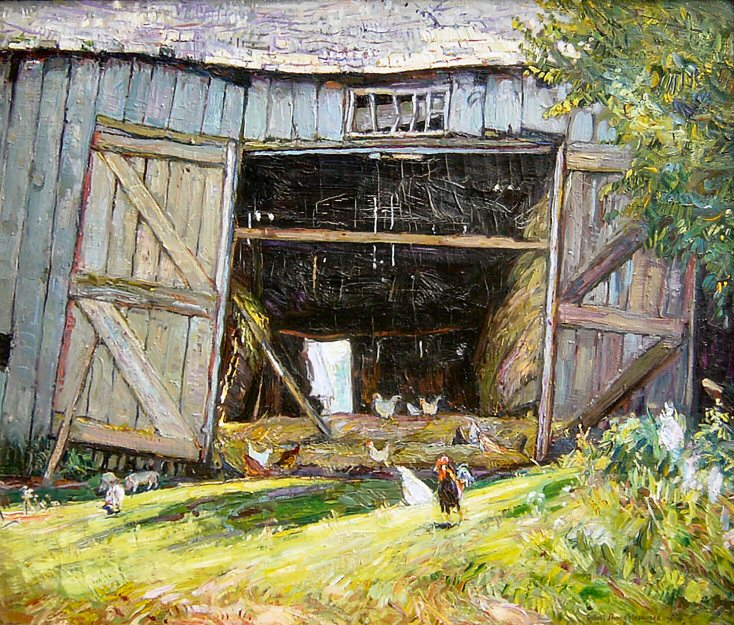
 The Friendly Doorway, 1924 - '26
The Friendly Doorway, 1924 - '26
This painting is an example of RSW experimenting
with focus by using well defined, blended brush
style in the center, going more impressionistic the
farther from the center the scene gets, Manet did.
What is so remarkable about this painting is that this is his first known piece painted in his new style after his forced hiatus following the Redgate fire. The style is not only blended in its brush style but distinstively luminant which will become his signature style from 1933 on. It is so remarkable in how different it is from anything else painted in its time, and yet can be held up, side by side, next to anything he painted a decade later or beyond. It is the GENUS of Woodward's reemergence from the ashes of Redgate. An evolutionary step in his maturation process. For a comparison, The Friendly Doorway was painted around the same time. While The Friendly Doorway is less impressionisitic then his earlier work, it is still thick in its paint application. It is notably more luminous as well but not to the radiant level of The Flying Fox. Note also how both paintings, The Friendly Doorway and The Flying Fox are portal paintings looking through the barn interiors to the light coming from a window or door on the other side. This is reminiscent of the wooded interiors of his Quintessential Redgate paintings.

.png)
